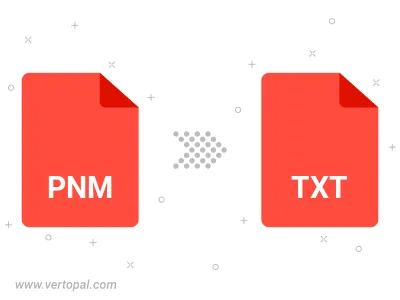Convert PNM to TXT BRAILLE6DOTS
Convert PNM images to TXT BRAILLE6DOTS format, edit and optimize images online and free.

The PNM (Portable Anymap) file extension, developed by Jef Poskanzer in the 1980s, stands for Portable Any Map. It is an uncompressed raster graphics format designed for portable image storage and exchange, encompassing three sub-formats: PBM (Portable Bitmap), PGM (Portable Graymap), and PPM (Portable Pixmap). PNM files store image data in plain text or binary format, ensuring easy usage across different platforms and applications. This format is widely supported by various image editing software and is valued for its simplicity and lossless compression.
A TXT file extension, associated with "Unicode Braille 6 Dots", refers to the representation of braille characters within the Unicode standard, specifically using a 6-dot cell configuration. This allows for the encoding of braille patterns, making it accessible for visually impaired users to read and write text digitally. The history of braille dates back to its invention by Louis Braille in the 19th century, and its inclusion in Unicode ensures compatibility across various digital platforms.
Choose your PNM image for uploading to our PNM converter.
Pick any PNM to TXT BRAILLE6DOTS tools if you need to edit your PNM file, then click the Convert button.
After the convert is complete, click on the Download button to get your TXT BRAILLE6DOTS image.

To change PNM format to TXT BRAILLE6DOTS, upload your PNM file to proceed to the preview page. Use any available tools if you want to edit and manipulate your PNM file. Click on the convert button and wait for the convert to complete. Download the converted TXT BRAILLE6DOTS file afterward.
Follow steps below if you have installed Vertopal CLI on your macOS system.
cd to PNM file location or include path to your input file.Follow steps below if you have installed Vertopal CLI on your Windows system.
cd to PNM file location or include path to your input file.Follow steps below if you have installed Vertopal CLI on your Linux system.
cd to PNM file location or include path to your input file.